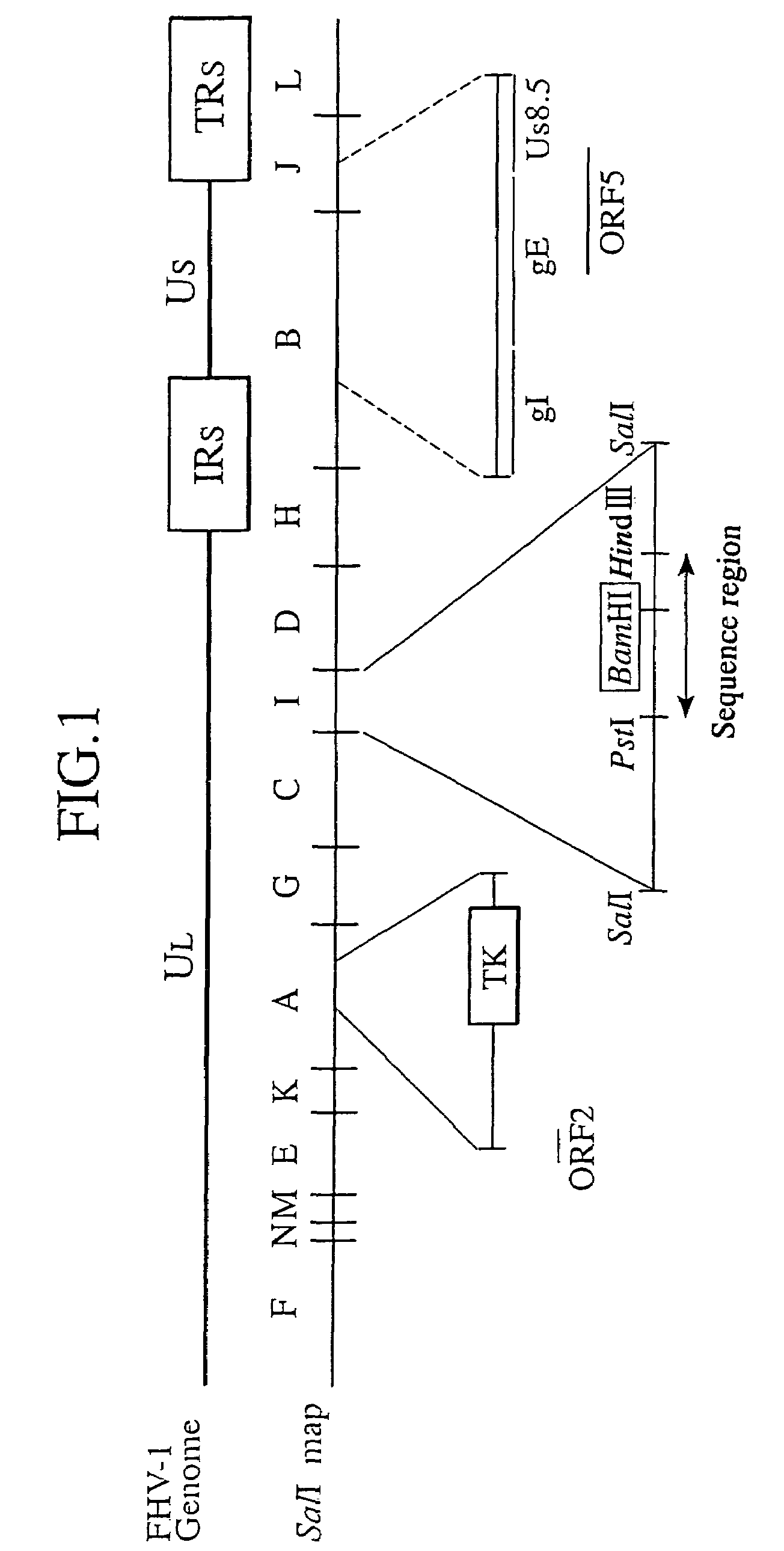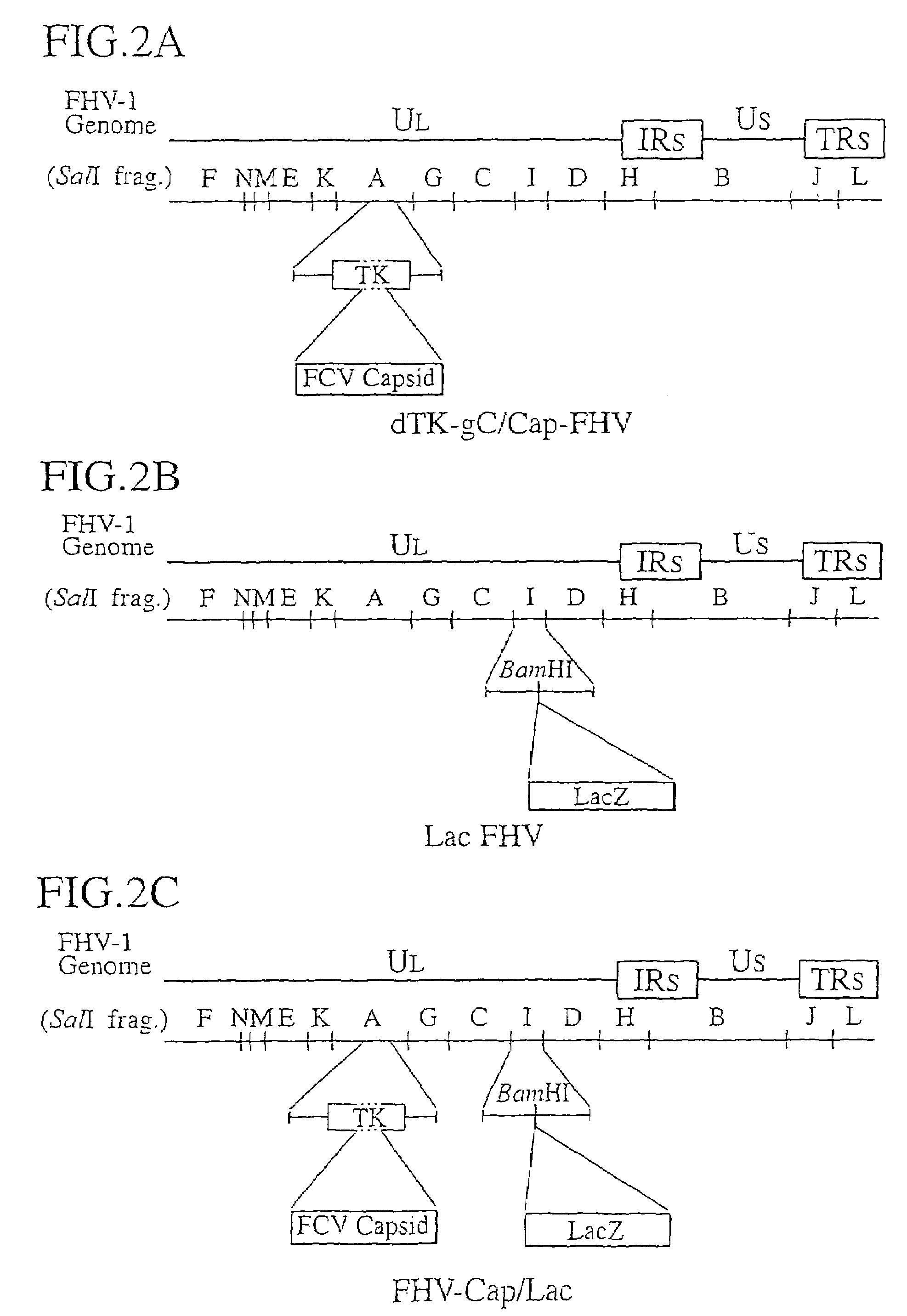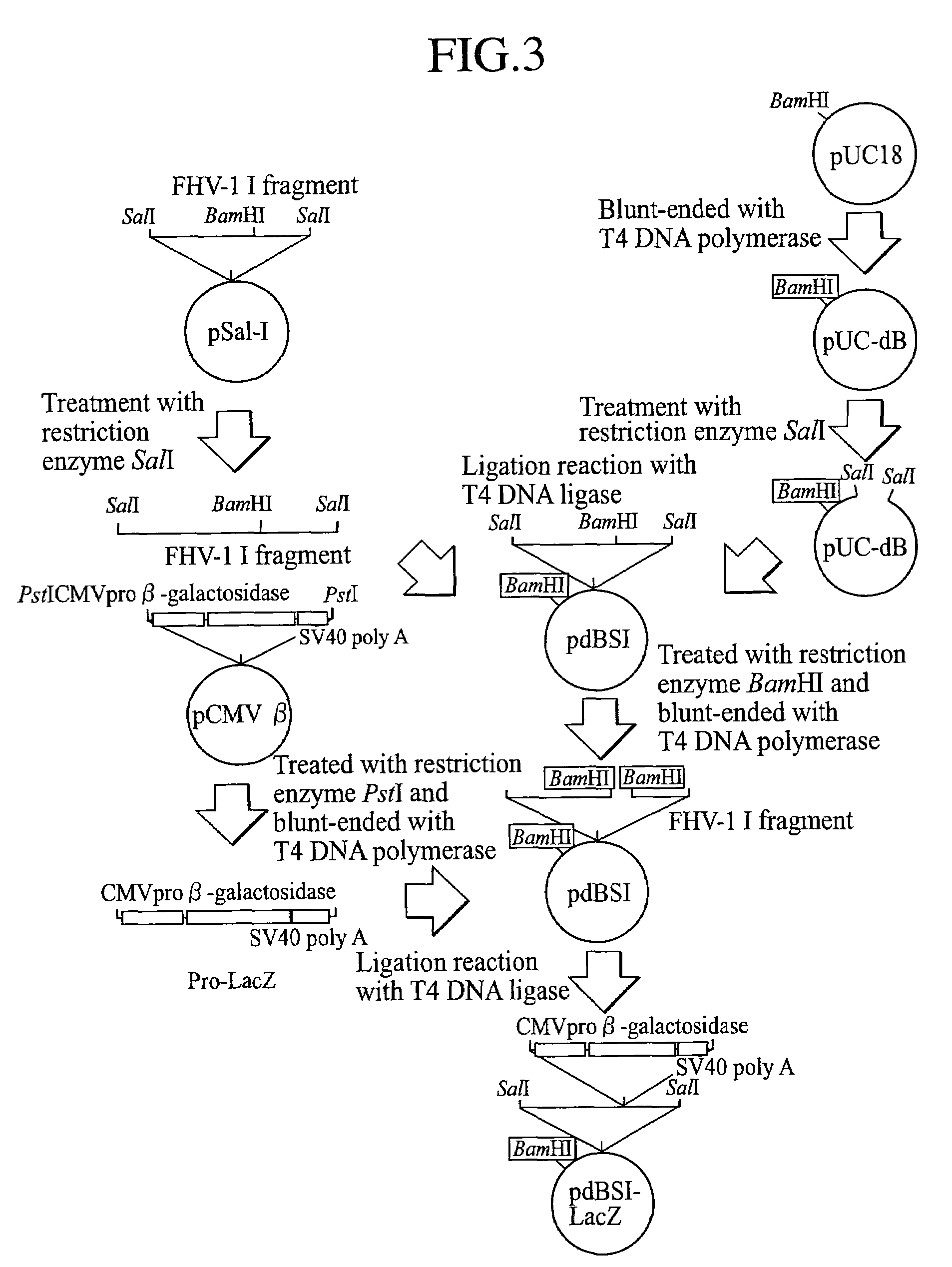Recombinant feline herpesvirus type 1 and polyvalent vaccine using the same
a technology of feline herpesvirus and polyvalent vaccine, which is applied in the field of recombinant feline herpesvirus type 1 and polyvalent vaccine using the same, can solve the problems of increasing production costs, not being able to meet the recent increasing demand for trivalent or more feline vaccines, and not being able to detect the hos
- Summary
- Abstract
- Description
- Claims
- Application Information
AI Technical Summary
Benefits of technology
Problems solved by technology
Method used
Image
Examples
example 1
Construction of a Transfer Vector for Construction of a Recombinant FHV-1 Vector
(1) Construction of a Plasmid for Integration of the FHV-1 Genome I Fragment
[0071]pSal-I (obtained by Dr. T. Miyazawa, Department of Agriculture, Tokyo University) which is a plasmid vector containing the I fragment from a SalI library of FHV-1 genome DNA was digested with SalI, and using a commercial QIAquick Gel Extraction Kit (manufactured by QIAGEN), the fragment I of FHV-1 genome was separated and prepared according to its attached manual.
[0072]Separately, as a plasmid vector for integration of the fragment I, a commercial plasmid vector pUC18 (manufactured by Amersham Pharmacia Biotech) ring-opened by digestion with BamHI was blunt-ended by incubation at 37° C. for 5 minutes in the presence of T4 DNA polymerase (manufactured by Takara Shuzo Co., Ltd.). Thereafter, the site blunt-ended with BamHI was ligated by incubation at 16° C. for 17 hours in the presence of T4 DNA ligase (manufactured by GIBCO...
example 2
Preparation of a Transformant Containing pdBSI-LacZ
[0079]A pdBSI-LacZ DNA solution was mixed with a commercial competent E. coli XL-2 Blue MRF′, and the plasmid DNA was transformed into the E. coli according to its attached manual, and the transformant was cultured at 37° C. for 17 hours in an LB agar medium containing 50 μg / ml ampicillin to provide ampicillin-resistant transformant clones which proliferated on the agar medium.
[0080]Then, the plasmid DNA extracted from each of the transformant clones was digested with SalI and analyzed by electrophoresis on 0.8% agarose gel, whereby a clone having both the I fragment divided into two fragments of about 6,600 base pairs and about 4,700 base pairs (based on the SalI site in the Pro-LacZ cassette inserted into the I fragment, see FIG. 5) and a vector plasmid pUC18 DNA fragment of about 2,600 base pairs was selected (FIG. 6, lane 2, digestion of pdBSI-LacZ with SalI). By digestion of the selected clone with NotI, the clone was confirmed...
example 3
Preparation of Recombinant FHV-1 into which LacZ was Inserted
[0082]The above transfer vector pdBSI-LacZ DNA was introduced by transfection into CrFK cells, and the CrFK cells into which the gene had been introduced were infected with attenuated FHV-1, followed by homologous genetic recombination between pdBSI-LacZ DNA and attenuated FHV-1 genome in the cells, to obtain the recombinant FHV-1 having the LacZ gene integrated into the BamHI digested site in the I fragment as one of the SalI digested DNA fragments of the FHV-1 genome. Hereinafter, this is described in more detail.
[0083]3 μg pdBSI-LacZ DNA was mixed with 10 μl of a commercial transfection reagent LipofectAMINE (manufactured by GIBCO BRL), and the mixture was incubated at room temperature for 45 minutes. Then, 1×106 CrFK cells, which had been cultured at 37° C. in Dulbecco's minimum essential medium (abbreviated hereinafter into D-MEM, manufactured by Nissui) containing 10% fetal bovine serum in a 6-wells tissue culture pl...
PUM
| Property | Measurement | Unit |
|---|---|---|
| pH | aaaaa | aaaaa |
| degree of freedom | aaaaa | aaaaa |
| agarose gel electrophoresis | aaaaa | aaaaa |
Abstract
Description
Claims
Application Information
 Login to View More
Login to View More - R&D
- Intellectual Property
- Life Sciences
- Materials
- Tech Scout
- Unparalleled Data Quality
- Higher Quality Content
- 60% Fewer Hallucinations
Browse by: Latest US Patents, China's latest patents, Technical Efficacy Thesaurus, Application Domain, Technology Topic, Popular Technical Reports.
© 2025 PatSnap. All rights reserved.Legal|Privacy policy|Modern Slavery Act Transparency Statement|Sitemap|About US| Contact US: help@patsnap.com



